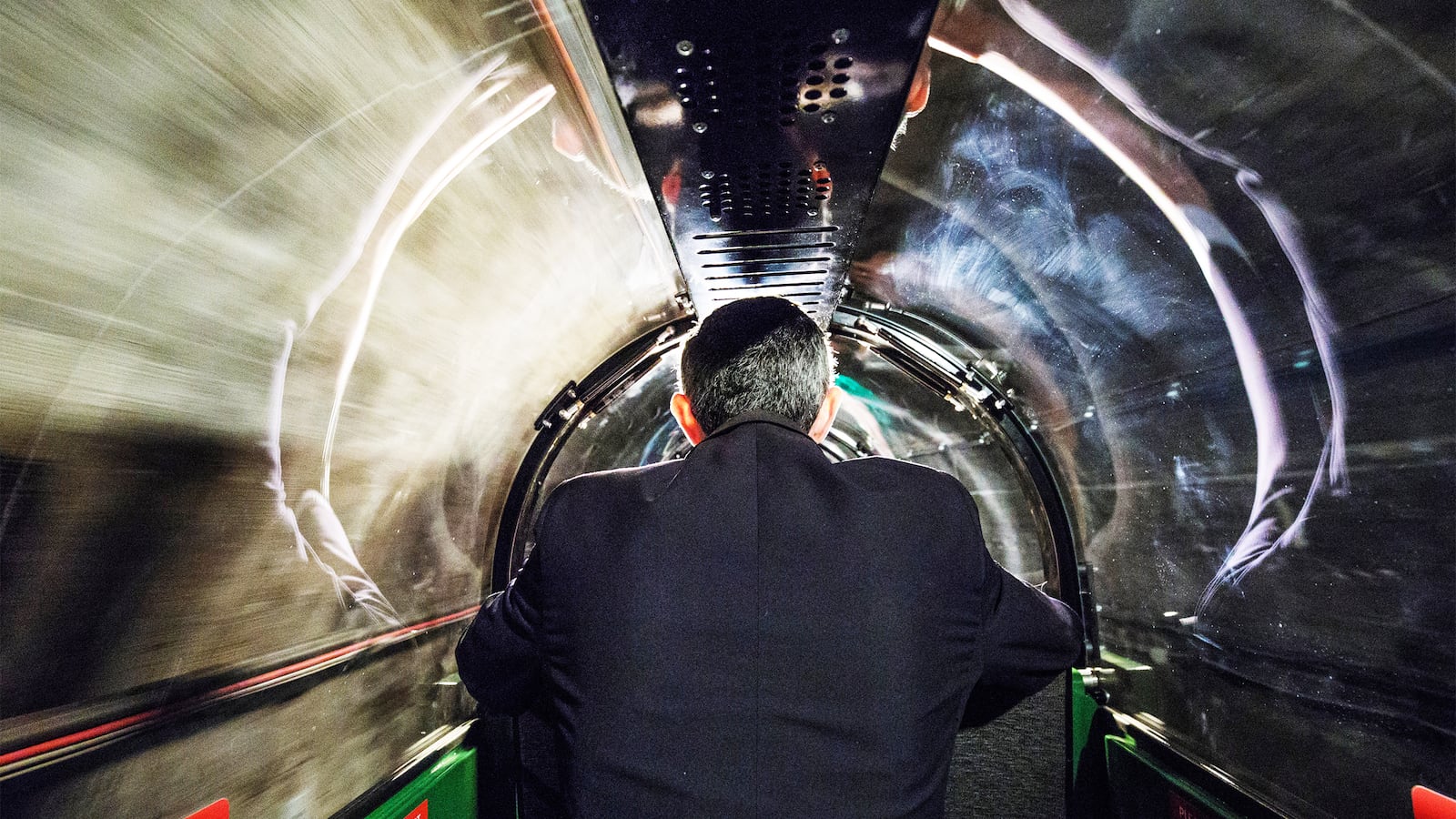LONDON—If you don’t like it when the subway train gets stuck mid-tunnel and the lights go out—this is not the ride for you.
A network of abandoned tunnels which has snaked beneath London for 90 years will be opened to the public for the first time this month. People are invited to cram themselves into a series of tiny train tunnels that were once used to transport 4 million letters a day.
The so-called Mail Rail was abandoned in 2003 after the best part of a century as the main artery for the Royal Mail postal service, transporting letters between sorting offices in the capital.
For more than a decade the tunnels have been mothballed while officials pondered what to do with the redundant infrastructure. Someone suggested the tunnels, which run from Whitechapel in the East End to Paddington in the west of the city, could become a bicycle super-highway, a more realistic proposal imagined a sprawling underground mushroom farm.
Instead, someone struck upon the idea of transforming these disused tracks into the centerpiece of the new Postal Museum on the site of London’s biggest letter-sorting office. Even before the tunnels are officially opened, the experience is a smash hit—the first six weeks are already a sellout.
It is indeed an intriguing prospect: explore the tunnels once populated by 220 postmen for 22-hours a day—all beavering away underground to deliver postcards, bills, and love letters.
The underground existence of these men is frozen in time, with a dartboard they used between deliveries still in place on the wall of a mail station. “It was hard work down here but we all thought we were part of something important,” says Ray Middlesworth, who retired in August after working the Mail Rail since 1983.
The postal workers themselves never used the trains. They worked at miniature versions of London Tube stations where the mail deliveries were loaded and unloaded onto the driverless trains.
The reason the workers never hopped on board? There’s nowhere near enough room.
The new replica trains are less than 5 feet tall—and that’s from the wheels on the track to the roof—so crumpling your body into one of the carriages is an almighty feat for taller passengers. A 6-foot-tall person cannot sit up straight in the carriage, and you could not stretch your arms out on either side.
“Do not lean on the doors or glass,” the sign says optimistically, but it’s almost impossible to avoid. The tiny carriages are supposedly built for up to four people but at least two of those would realistically have to be children.
The tunnel itself is not tall enough for an adult to stand up in. Midway through the 15-minute ride you are made to believe that you are on the verge of reliving an authentic 90-year-old experience of crawling back to the station after the train ground to a halt and the tunnel was plunged into darkness.
This turns out to be a feature not a bug—the train pretends to break down in order to replicate the frequent power cuts that afflicted the real track.

Surely this will be the first element of the tour to be revised once the train ride is opened and members of the public start to freak out. Volunteering to be squeezed into this space is enough of an inducement to claustrophobia without the addition of counterfeit disasters.
Comfort aside, there is an undeniable thrill in traversing these rusted metal tubes, with miniature stalactites reaching down toward the little red battery-powered trains.
The mini-trains are bound to appeal to children—and it does feel as though some of the audio-visual elements of the tour are designed not just to commemorate the glory days of the postal service but to explain to younger passengers exactly what a letter is and why anyone would bother writing one.
We see a video montage of a little girl in the 1950s walking to a bright red postbox clutching her letter to the queen; another note is directed toward a black-and-white image of soldiers serving overseas.
As well as the excitement of glimpsing these secret chambers, there is a distinct air of melancholia in the tunnels. This was once one of the world’s finest postal advances; now it’s obsolete. Many of the large letter-sorting offices have been moved out of town—rendering the intra-post office deliveries unnecessary—and more importantly, people don’t send so many letters now.
The whole thing feels like a mini-, particularly British tragedy, especially as you are passing through the preserved former workplaces of a once-proud postal staff.
As the train chugs along these antique tracks, the voice-over reminisces about England’s one true moment of sporting glory—winning the World Cup in 1966.
There were “a few celebrations down here that summer,” we’re told.
Seconds later on the whistle-stop history tour section, Winston Churchill’s voice appears and we are into World War II reverie.
The heyday of this line was undoubtedly impressive—it was bombed by the Luftwaffe during World War II and re-opened the following day—but we don’t really need to bow our heads and wish for a bygone era. We are just a mile away from “Tech City”—Britain’s answer to Silicon Valley—where tomorrow’s great advances and startups are being launched.
Indeed, this diverting trundle underground—and the bright postal museum across the road—is largely designed to attract parents with their kids, as well as the hardcore philatelist crowd.
If old industries are crumbling and “experiences” and gimmicks are the future, the nostalgic Mail Rail is a charming reminder that some gimmicks aren’t so bad.






